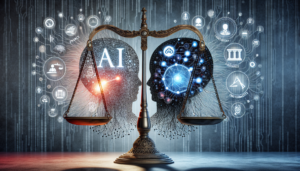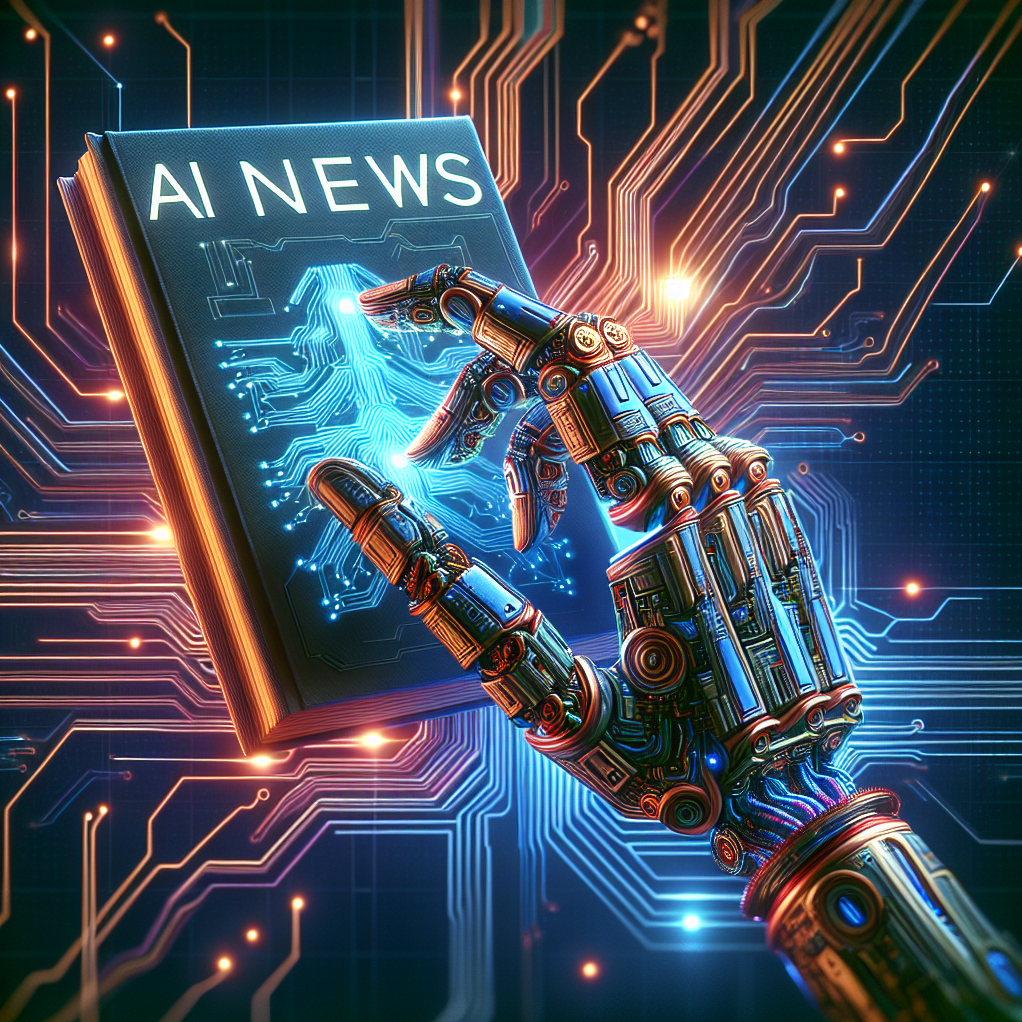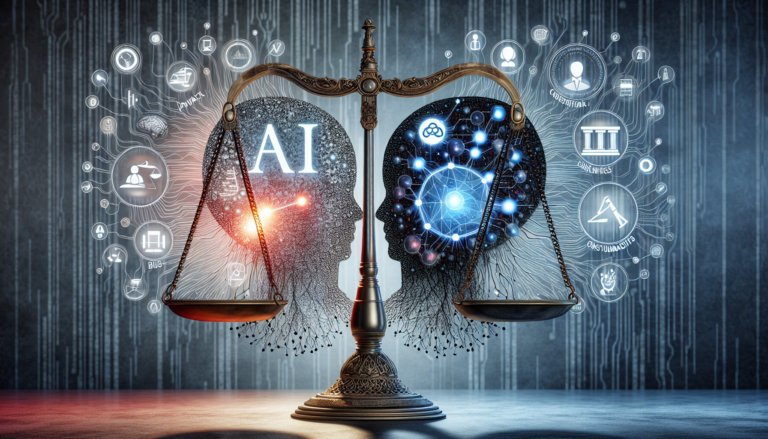In the age of digital information, the spread of misinformation has become a pressing concern. With the rising demand for reliable sources, AI models have emerged as a powerful tool to combat misinformation online. These intelligent systems possess the capability to analyze vast amounts of data, sift through news articles, social media posts, and online content to identify false information and misleading narratives. By utilizing advanced algorithms and machine learning techniques, AI models are shaping the online landscape by providing accurate and trustworthy information to users worldwide. This article explores the ways in which AI models are actively tackling misinformation, shedding light on the significant strides made in this ever-evolving battle for truth.

Detecting and categorizing misinformation
Text analysis
AI models are playing a crucial role in detecting and categorizing misinformation in written text. By utilizing natural language processing (NLP) techniques, these models can analyze the content of articles, blog posts, social media posts, and other written material to identify false or misleading information. They can detect patterns, linguistic cues, and inconsistencies in the text that might indicate the presence of misinformation. Text analysis can also involve detecting grammatical errors, factual inaccuracies, and logical fallacies which may point towards the presence of misinformation.
Image and video analysis
With the increasing prevalence of visual media on various online platforms, it has become necessary to combat misinformation in images and videos as well. AI models can analyze images and videos using computer vision algorithms to spot signs of manipulation or misinformation. They can identify digital alterations, deepfakes, and other visual tricks that might be used to deceive viewers. By examining metadata, timestamps, and other contextual information, AI models can determine the authenticity and credibility of visual content, helping to prevent its dissemination.
Identifying fake news sources
Identifying the sources of fake news is another critical aspect in the fight against misinformation. AI models can be utilized to analyze various factors associated with news sources, such as domain authority, past track record, and content quality. By using machine learning algorithms, these models can learn patterns and characteristics of fake news sources, allowing them to identify and flag such sources in real-time. This information can be used to prioritize fact-checking efforts and make users aware of potentially unreliable sources.
Fact-checking and verification
Automated fact-checking
AI models are increasingly being used for automated fact-checking processes. These models can process large amounts of information, compare claims to existing databases of verified facts, and determine the accuracy of the information. By utilizing machine learning and statistical algorithms, AI models can identify claims that are likely to be false or misleading, helping to debunk misinformation quickly. While automated fact-checking is not without its limitations, it serves as a valuable tool in the battle against misinformation, complementing human fact-checkers.
Collaborative fact-checking platforms
Collaboration between human fact-checkers and AI models is key to effective verification processes. Collaborative fact-checking platforms enable the collective efforts of journalists, experts, and AI models to identify and debunk misinformation. By providing a platform for collaboration, these platforms enhance the speed and accuracy of fact-checking. AI models can assist fact-checkers by automatically suggesting relevant sources and evidence, streamlining the verification process. This collaboration helps to leverage the strengths of humans and AI, ensuring reliable and accurate information is shared.
Image and video verification
AI models are also valuable for verifying the authenticity of images and videos. By using techniques such as reverse image search, image forensics, and deep neural networks, these models can determine if an image or video has been manipulated or misrepresented. They can analyze visual elements, metadata, and compare with known databases to identify inconsistencies or signs of tampering. This helps to combat the spread of misinformation through visual media, ensuring that users can rely on accurate representations of events.
Identifying and addressing misleading content
Understanding context and intent
AI models are designed to understand the context and intent behind the information being presented. They can analyze the language used, the overall tone, and the context in which the content is shared to determine if it is misleading. By identifying contradictions, false implications, and fallacious reasoning, these models can flag content that requires further scrutiny. This understanding of context and intent allows AI models to effectively identify and combat misinformation that may be subtle or disguised within seemingly credible information.
Identifying bias and subjective opinions
Recognizing bias and subjective opinions is vital for combating misinformation. AI models can be trained to identify linguistic markers, semantic cues, and emotional language that may indicate bias or subjectivity. By detecting these indicators, the models can flag content that may present a skewed perspective or manipulate the reader’s opinion. This helps users to be more critical of the information they encounter and encourages them to consider multiple viewpoints before forming their own opinions.
Addressing clickbait and sensationalist headlines
Clickbait and sensationalist headlines are often used to attract attention and generate clicks, but they can also contribute to the spread of misinformation. AI models can analyze headlines and evaluate their veracity and sensationalism levels. By assessing linguistic features, exaggerations, and provocative language, these models can identify clickbait and sensationalist headlines. By flagging such content, AI models help users recognize and avoid potential sources of misinformation, encouraging them to seek more reliable and credible sources of information.
Promoting reliable sources and credibility
Identifying authoritative sources
One of the key roles of AI models is to help users identify authoritative and trustworthy sources of information. These models can analyze various factors, such as domain authority, editorial guidelines, and track record, to assess the credibility of a source. By providing users with information about the reliability and reputation of a source, AI models empower individuals to make informed decisions about the information they consume. This promotes the dissemination of accurate and reliable information while discouraging the spread of misinformation.
Rating and ranking websites
To further assist users in identifying reliable sources, AI models can assign ratings and rankings to websites based on their credibility and accuracy. These models consider factors such as the presence of fact-checking practices, adherence to journalistic standards, and transparency in reporting sources. By providing users with rankings or scores, AI models enable individuals to prioritize trustworthy sources when seeking information. This helps to combat the spread of misinformation, directing users towards credible sources and mitigating the influence of unreliable information.
Flagging and labeling questionable content
AI models can also play a role in flagging and labeling questionable content, helping users become more discerning consumers of information. By analyzing the content and comparing it with known patterns of misinformation, AI models can flag articles, posts, or videos that might contain misleading information. This flagging system can prompt users to exercise caution and critically evaluate the information presented. Flagging and labeling questionable content empowers individuals to make informed decisions, reducing the impact of misinformation in online spaces.

Mitigating the spread of misinformation
Social media monitoring
AI models are harnessed to monitor social media platforms to identify and combat the spread of misinformation. These models can analyze vast amounts of data, including text and visual content, to detect patterns and trends associated with misinformation. By tracking the spread of misinformation in real-time, AI models can provide valuable insights for developing countermeasures. Social media monitoring enables timely intervention to limit the reach and impact of misinformation, helping to mitigate its effects on public discourse.
Automated content moderation
automated content moderation is an essential tool in preventing the dissemination of misinformation. AI models can be trained to analyze user-generated content, identifying and removing posts or comments that contain false or misleading information. By leveraging natural language processing techniques, these models can flag and moderate content at scale, reducing the chances of misinformation spreading rapidly. Automated content moderation mitigates the negative impact of misinformation in online communities, fostering a more reliable and trustworthy digital environment.
Altering newsfeed algorithms
Altering newsfeed algorithms is another strategy employed to mitigate the spread of misinformation. AI models can be utilized to tweak algorithms that determine the visibility of posts in a user’s newsfeed. By prioritizing content from reliable sources, fact-checked information, or diverse viewpoints, these algorithms can reduce the reach of misinformation. By promoting quality content and countering filter bubbles, AI models in newsfeed algorithms aim to provide users with a balanced and accurate representation of information, limiting the influence of misleading or false material.
Enhancing natural language processing
Improving language understanding
AI models are continuously improving their language understanding capabilities to better detect and address misinformation. Natural language processing techniques enable these models to interpret the meaning and context of written content with greater accuracy. Through advanced language models and deep learning algorithms, AI models can comprehend subtle nuances, sarcasm, and contextual clues, allowing them to detect more sophisticated and deceptive misinformation. Strengthening language understanding is crucial in staying ahead of evolving misinformation tactics.
Semantic analysis and contextual clues
Semantic analysis is a key component of detecting and combating misinformation. AI models can analyze the semantic structure of text, identifying inconsistencies or contradictions that may indicate the presence of false information. By examining contextual clues, including references, citations, and cross-referencing, these models can verify the information presented. Semantic analysis and contextual clues help to identify subtle forms of misinformation that may not be immediately apparent, enhancing the accuracy of fact-checking efforts.
Detecting sarcasm and irony
Sarcasm and irony pose challenges when it comes to detecting misinformation. However, AI models are making significant progress in detecting and understanding these linguistic nuances. By incorporating sentiment analysis, tone recognition, and sarcasm detection techniques into their algorithms, AI models can identify when sarcasm or irony is used to convey misinformation. Detecting and understanding sarcasm and irony helps AI models accurately assess the intent behind certain statements, contributing to more reliable and nuanced misinformation detection.
Combating deepfakes and manipulated media
Deepfake detection techniques
Deepfake technology has the potential to create highly realistic but entirely fabricated audio and video content, making it a significant challenge in the fight against misinformation. AI models are being developed to detect deepfakes by analyzing visual and audio elements for inconsistencies or tampering indicators. By employing computer vision and voice recognition algorithms, these models can identify manipulated media, contributing to the ability to distinguish between genuine and fabricated content.
Identifying manipulated photos and videos
Beyond deepfakes, AI models are also capable of detecting manipulation in traditional photos and videos. By analyzing visual elements, metadata, and other features, these models can identify signs of manipulation such as retouching, splicing, or alterations. AI models can compare the content with known authentic references to detect discrepancies and raises red flags when tampering is suspected. By identifying manipulated photos and videos, AI models help users discern between genuine and potentially misleading visual content.
Developing digital authenticity techniques
To combat sophisticated misinformation techniques, AI models are being developed to establish digital authenticity. These models focus on creating digital fingerprints or signatures that can verify the authenticity of content. By analyzing aspects such as encoding patterns, compression artifacts, and other technical characteristics, these models can determine if a piece of media has been digitally tampered with. Establishing digital authenticity is crucial in maintaining trust in media content and mitigating the impact of misleading visual information.
Adapting to evolving misinformation tactics
Detecting and countering emerging trends
Misinformation tactics are constantly evolving, requiring AI models to adapt to new challenges. By continuously monitoring and analyzing emerging trends in misinformation, these models can be updated to detect and counter new strategies. Data-driven approaches that leverage machine learning enable AI models to learn from emerging patterns and adjust their detection algorithms accordingly. This adaptability ensures that AI models remain effective in combating misinformation, staying ahead of the tactics employed by those spreading false information.
Identifying evolving misinformation techniques
Identifying and understanding evolving misinformation techniques is vital in combating their spread. AI models can be trained to recognize emerging patterns and strategies used to mislead users. By monitoring the tactics employed by misinformation campaigns, the models can learn to identify early warning signs and common characteristics. This knowledge helps in developing robust detection and mitigation measures to counter these evolving techniques effectively.
Updating AI models for new challenges
As new challenges arise in the realm of misinformation, it is crucial to update and refine AI models to address them effectively. This includes incorporating new data, updating algorithms, and refining the model’s understanding of emerging trends. By continuously enhancing AI models and keeping them up to date, researchers and developers can ensure that these models are equipped to combat the latest forms of misinformation effectively.
Ethical considerations and challenges
Bias and fairness in AI algorithms
As AI models are used to combat misinformation, it is essential to address concerns related to bias and fairness. AI models can inadvertently incorporate biases present in the data they are trained on, which can lead to unfair outcomes or unintended consequences. It is crucial to continually evaluate and mitigate potential biases in AI algorithms to ensure that the fight against misinformation is conducted in an ethical and equitable manner. Transparency in the development and deployment of AI models is key to fostering trust and avoiding any potential harm caused by biased algorithms.
Filter bubbles and echo chambers
Filter bubbles and echo chambers are phenomena in which individuals are exposed to information that reinforces their existing beliefs, leading to the creation of self-contained information bubbles. AI models can contribute to the formation of filter bubbles if not properly managed. While AI models can personalize content based on user preferences, it is important to strike a balance between personalization and ensuring that users are exposed to diverse perspectives and reliable sources of information. By accounting for this challenge, AI models can work towards combating misinformation while promoting a more balanced and informed discourse.
Misuse and manipulation of AI models
AI models themselves can become targets for misuse and manipulation by individuals or groups seeking to distribute misinformation. Adversarial attacks can be carried out to deceive AI models or to bias their outputs. Developers and researchers must actively work to safeguard AI models against such attacks by continuously improving security measures, monitoring for vulnerabilities, and implementing robust safeguards. Protecting and fortifying AI models against misuse is crucial in ensuring their effectiveness in combating misinformation.
Efforts towards collaborative solutions
Public-private partnerships
Collaboration between public and private entities is vital in the fight against misinformation. Public-private partnerships enable the pooling of resources, expertise, and knowledge to develop comprehensive strategies and tools to combat misinformation effectively. By fostering collaborations between governments, technology companies, and research institutions, public-private partnerships can leverage the strengths of each sector to develop innovative solutions that will protect the public from the harmful effects of misinformation.
Collaboration between tech companies
Tech companies play a fundamental role in combating misinformation, given their influence and reach. Collaboration between tech companies allows for the sharing of best practices, insights, and resources to develop more effective strategies and tools. By working together, these companies can create a united front against misinformation, collectively developing and implementing policies that prioritize the dissemination of accurate and reliable information.
Engagement with fact-checking organizations
Fact-checking organizations are crucial in the fight against misinformation, providing expertise and resources to verify claims and debunk false information. Engaging with fact-checking organizations allows AI models to benefit from their knowledge and insights. Collaboration with fact-checking organizations helps to ensure that AI models are trained on high-quality, verified data and that their output aligns with the standards and practices of trusted fact-checkers. This collaborative effort strengthens the fight against misinformation by combining the capabilities of AI models with the expertise of fact-checkers.
In conclusion, AI models are proving invaluable in the battle against misinformation online. From detecting and categorizing misinformation to fact-checking and verification, AI models play a crucial role in identifying and addressing misleading content. By promoting reliable sources and credibility, mitigating the spread of misinformation, enhancing natural language processing, combating deepfakes, and adapting to evolving tactics, AI models are at the forefront of the fight against online misinformation. However, ethical considerations and collaborative efforts are essential in ensuring that AI models are deployed responsibly and in coordination with public and private entities. By leveraging the strengths of AI technology and human expertise, we can collectively work towards a more informed and reliable digital landscape.






















